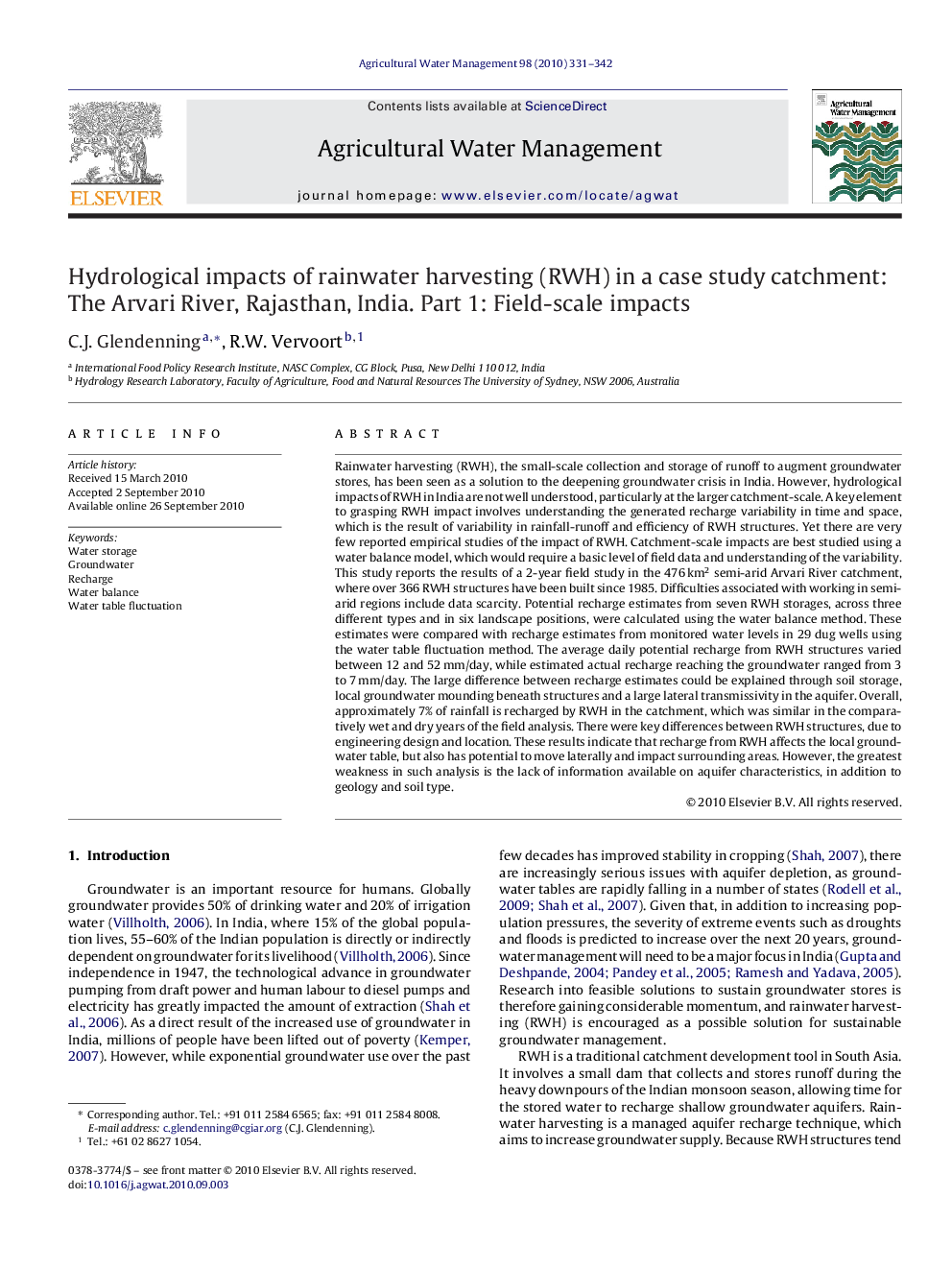| کد مقاله | کد نشریه | سال انتشار | مقاله انگلیسی | نسخه تمام متن |
|---|---|---|---|---|
| 4479525 | 1316447 | 2010 | 12 صفحه PDF | دانلود رایگان |

Rainwater harvesting (RWH), the small-scale collection and storage of runoff to augment groundwater stores, has been seen as a solution to the deepening groundwater crisis in India. However, hydrological impacts of RWH in India are not well understood, particularly at the larger catchment-scale. A key element to grasping RWH impact involves understanding the generated recharge variability in time and space, which is the result of variability in rainfall-runoff and efficiency of RWH structures. Yet there are very few reported empirical studies of the impact of RWH. Catchment-scale impacts are best studied using a water balance model, which would require a basic level of field data and understanding of the variability. This study reports the results of a 2-year field study in the 476 km2 semi-arid Arvari River catchment, where over 366 RWH structures have been built since 1985. Difficulties associated with working in semi-arid regions include data scarcity. Potential recharge estimates from seven RWH storages, across three different types and in six landscape positions, were calculated using the water balance method. These estimates were compared with recharge estimates from monitored water levels in 29 dug wells using the water table fluctuation method. The average daily potential recharge from RWH structures varied between 12 and 52 mm/day, while estimated actual recharge reaching the groundwater ranged from 3 to 7 mm/day. The large difference between recharge estimates could be explained through soil storage, local groundwater mounding beneath structures and a large lateral transmissivity in the aquifer. Overall, approximately 7% of rainfall is recharged by RWH in the catchment, which was similar in the comparatively wet and dry years of the field analysis. There were key differences between RWH structures, due to engineering design and location. These results indicate that recharge from RWH affects the local groundwater table, but also has potential to move laterally and impact surrounding areas. However, the greatest weakness in such analysis is the lack of information available on aquifer characteristics, in addition to geology and soil type.
Research highlights▶ Average daily potential recharge of rainwater harvesting structures, calculated using the water balance approach, is between 12 and 52 mm/day. ▶ 7 percent of annual rainfall is recharged by rainwater harvesting structures, which is similar in relatively wet and dry years. Structure recharge efficiency is also similar between different rainfall years, which is a reflection of structure design, location, soil and geology. ▶ Water table fluctuation method in dug wells gave recharge estimates on 7.2–11.3 mm/day. The large difference between recharge estimates of rainwater harvesting structures and dug wells suggests large lateral flow component in the aquifer. ▶ Water table fluctuation method and water balance approach are useful methods for initial estimates of local recharge characteristics in a data sparse environment.
Journal: Agricultural Water Management - Volume 98, Issue 2, 15 December 2010, Pages 331–342